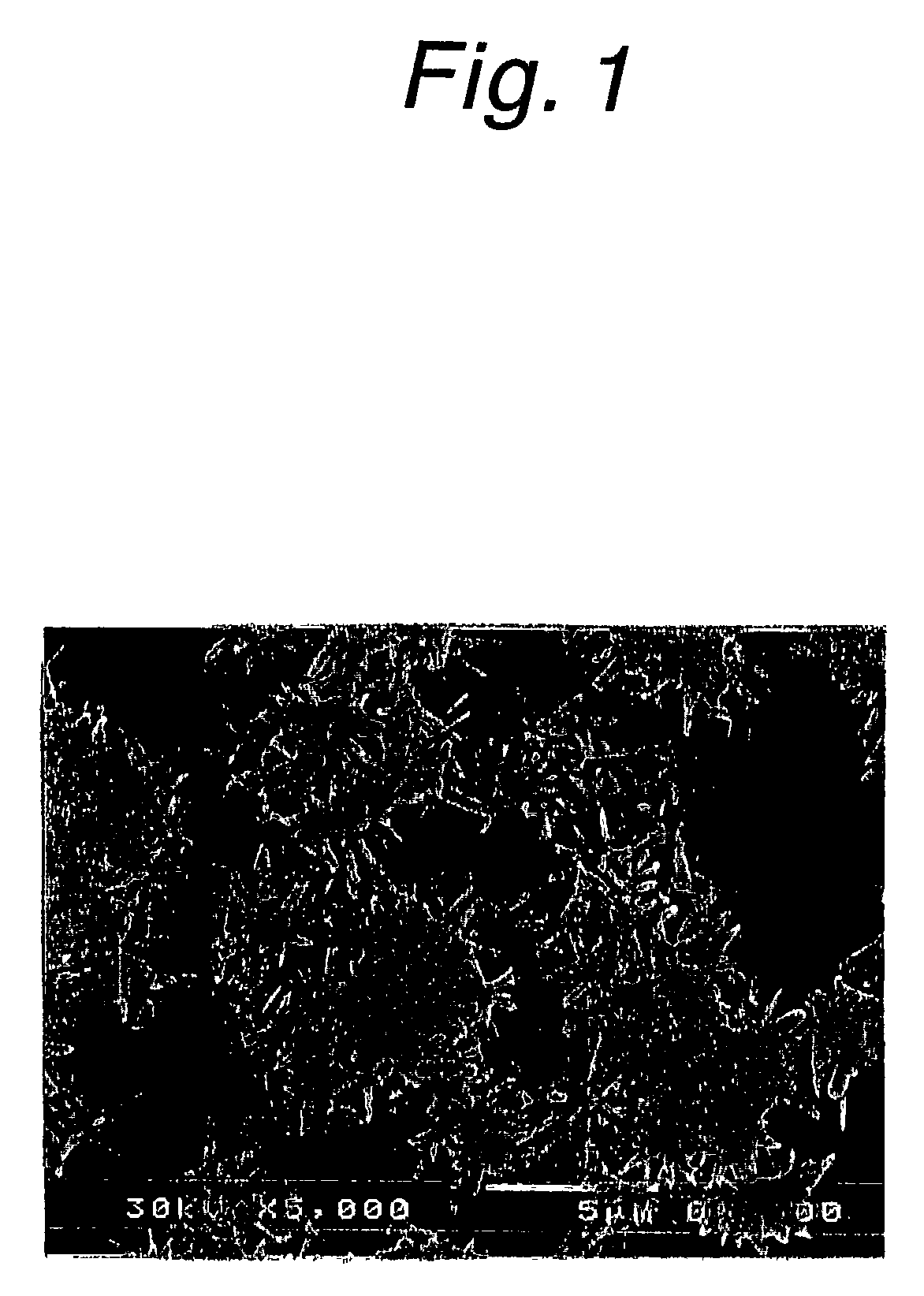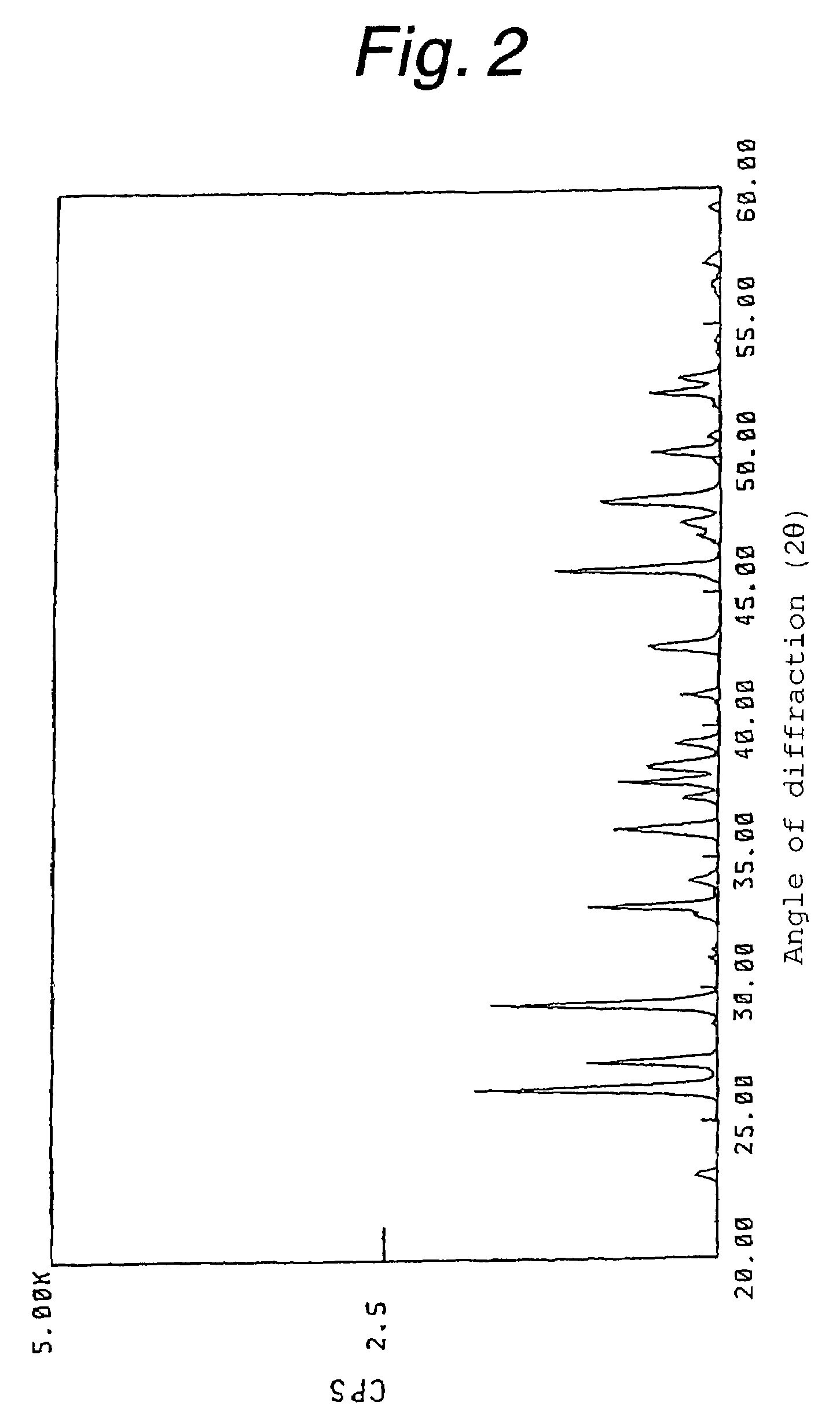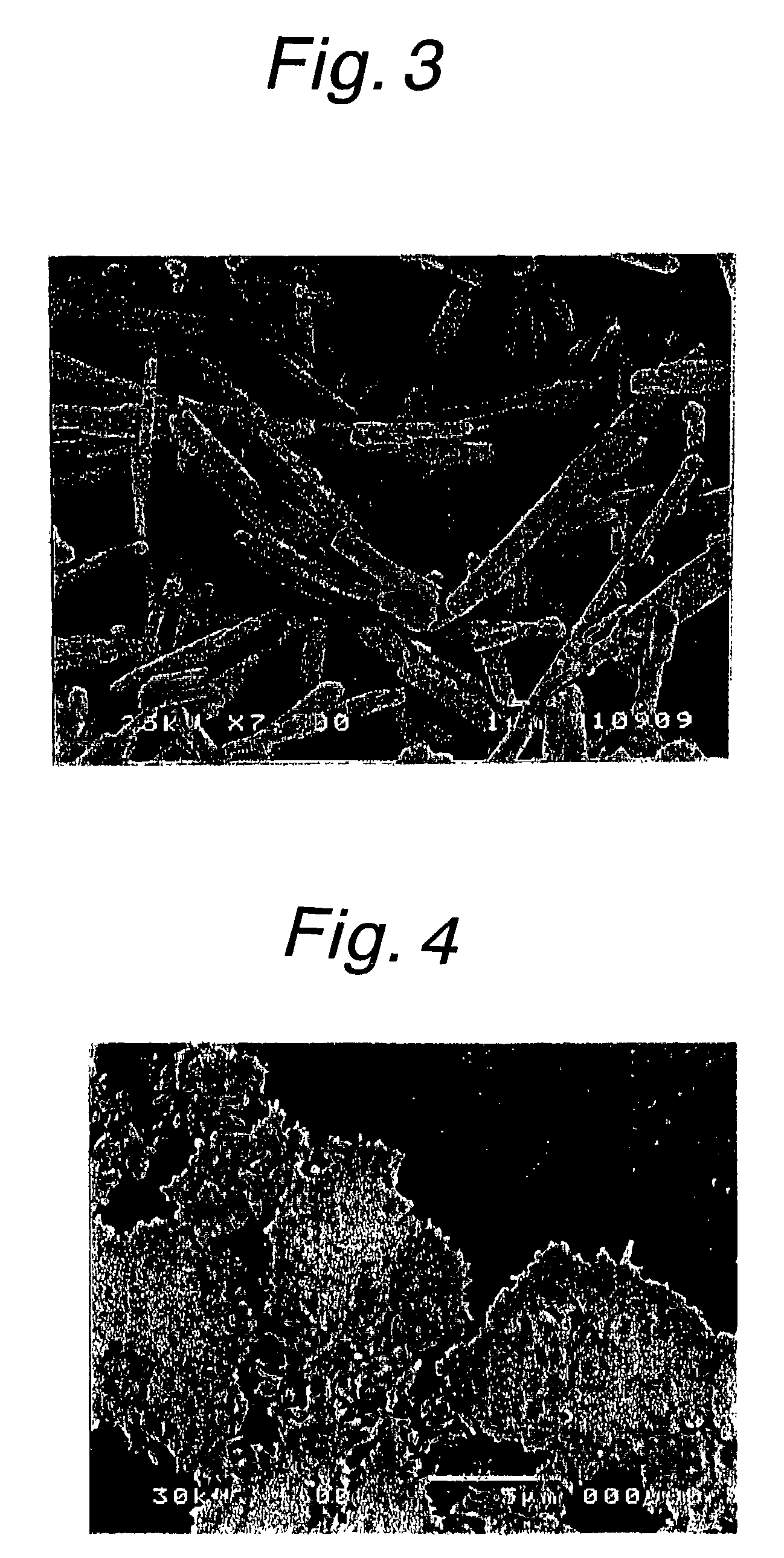Method for producing calcium carbonate
a technology of calcium carbonate and process, applied in the direction of magnesium compounds, non-fibrous pulp addition, alkali lye regeneration, etc., can solve the problems of difficult to obtain aragonite crystals at low concentrations of milk of lime, prolonged period, and process producing massive calcite crystals, etc., to improve bulk, opacity, whiteness and stiffness, the proportion of aragonite crystals is lowered, and the effect of improving the abrasion
- Summary
- Abstract
- Description
- Claims
- Application Information
AI Technical Summary
Benefits of technology
Problems solved by technology
Method used
Image
Examples
example 1
[0046]In a four-necked flask having a suitable capacity (the same vessel was used in the example and comparative examples below), slaked lime was mixed with a 7-fold dilution of white liquor in water (NaOH:Na2CO3:Na2S=0.17:0.04:0.06 mol / l) at a quick lime concentration of 10% by weight to prepare milk of lime, which was then causticized with green liquor (Na2CO3:Na2S=1.6:0.5 mol / l; the same composition as below) under the conditions of a sodium carbonate loading rate of 0.04 g (sodium carbonate) / min / g (quick lime), a temperature of 50° C. and an agitation speed of 400 rpm (using KYOEI POWER STIRRER TYPE PS-2N; the same agitator as below). The product was found to be calcium carbonate in the form of radiating aragonite crystals having an average particle size of 5.6 μm in which primary particles had an average major axis of 2.1 μm and an average minor axis of 0.3 μm. The wire abrasion was 0.2%. Experimental conditions and results are shown in Table 1.
example 2
[0047]The procedure of Example 1 was repeated except that a 2-fold dilution of white liquor in water (NaOH:Na2CO3:Na2S=0.60:0.14:0.21 mol / l) was used at a quick lime concentration of 40% by weight to prepare milk of lime, which was then causticized with green liquor under the conditions of a sodium carbonate loading rate of 0.005 g / min / g and a temperature of 90° C. The product was found to be calcium carbonate in the form of columnar aragonite crystals having an average particle size of 7.0 μm in which primary particles had an average major axis of 6.5 μm and an average minor axis of 0.6 μm. The wire abrasion was 0.1%. Experimental conditions and results are shown in Table 1.
PUM
| Property | Measurement | Unit |
|---|---|---|
| temperature | aaaaa | aaaaa |
| temperature | aaaaa | aaaaa |
| pH | aaaaa | aaaaa |
Abstract
Description
Claims
Application Information
 Login to View More
Login to View More - R&D
- Intellectual Property
- Life Sciences
- Materials
- Tech Scout
- Unparalleled Data Quality
- Higher Quality Content
- 60% Fewer Hallucinations
Browse by: Latest US Patents, China's latest patents, Technical Efficacy Thesaurus, Application Domain, Technology Topic, Popular Technical Reports.
© 2025 PatSnap. All rights reserved.Legal|Privacy policy|Modern Slavery Act Transparency Statement|Sitemap|About US| Contact US: help@patsnap.com



